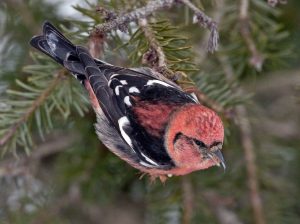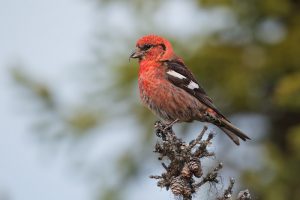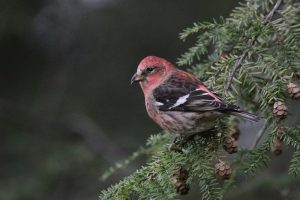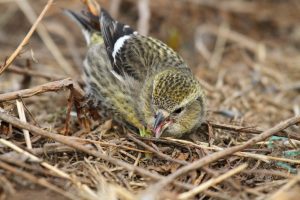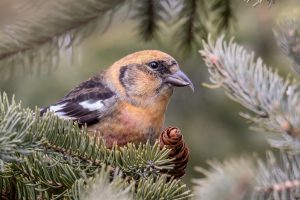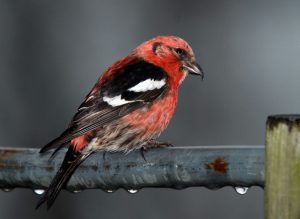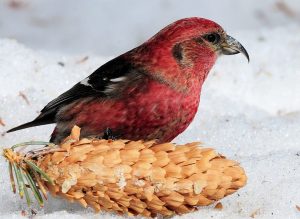White-winged Crossbill
The white-winged crossbill belongs to the finch family. Usually, it is smaller than some of its cousins, and the juvenile bird is more similar to other adult crossbills.
Scientific Classification
| Kingdom | Animalia |
| Phylum | Chordata |
| Class | Aves |
| Order | Passeriformes |
| Family | Fringillidae |
| Subfamily | Carduelinae |
| Genus | Loxia |
| Scientific Name | Loxia leucoptera |
Quick Information
| Also Known as | Two-barred crossbill |
| Description | Size: 5.5-6.2 in (14-16 cm) Weight: 0.88-1.2 oz (25-35 g) Color: Males are red bodied while females are lemon green, both have two white stripes on their wings |
| Distribution | Finland, Alaska, Canada, and America |
| Habitat | Coniferous forest |
| Subspecies | 1. Loxia leucoptera leucoptera 2. Loxia leucoptera bifasciata |
| Sounds & Calls | ‘Toot’ and ‘Psrit’ |
| Lifespan | Around 4 years |
| Diet | Alder, larch, birch, and spruce seeds |
| Adaptations | Their sturdy beak is exclusively for extracting the seeds |
| Predators | Blue jay and other bigger birds |
| IUCN Conservation Status | Least Concern |
Behavior
- They forage in small flocks throughout the year
- They prefer only conifer seeds
Mating and Reproduction
Breeding depends on the food sufficiency as females need more food to lay eggs, so there is no particular season of mating, but most female birds after a successful period of courtship tend to lay 3-4 eggs in March-April. Eggs are mostly purple or brown spotted greenish to whitish in color. Their incubation period lasts for 12-14 days in a nest made of weeds and twigs, moss, and linen.
Life-cycle
Juvenile crossbills have a brown coloration with prominent white streaks. They leave the nest within 21-25 days.
Interesting Facts
- A white-winged crossbill can eat as much as 3,000 conifer seeds each day.
- The scientific name of the species has come from the meanings of two words, like Loxia that means crosswise, and leucoptera which means white-winged.
References
- https://luontoportti.com/en/t/1671/two-barred-crossbill
- https://birdsoftheworld.org/bow/species/whwcro/cur/introduction
- https://www.allaboutbirds.org/guide/White-winged_Crossbill/overview
Published on April 22nd 2019 by Sahana Kanjilal under Coniferous Forest Animals.
Article was last reviewed on 5th December 2024.


